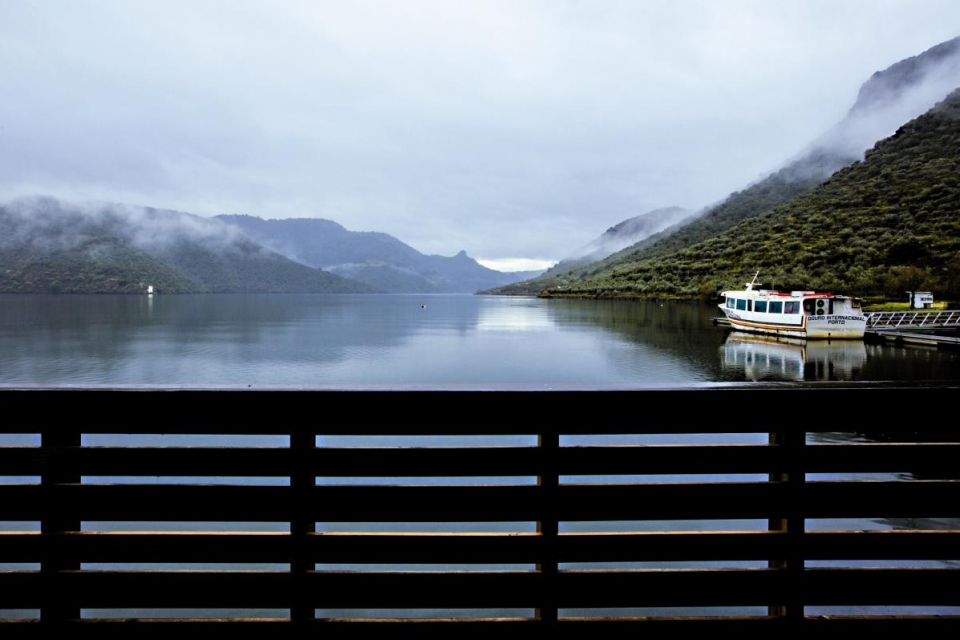The name of Freixo de Espada à Cinta seduces by its grace, but there are many more charms in the native land of the poet Guerra Junqueiro. There are amazing legends and monuments, bits of history and heritage to savor through the streets, sweeping vistas, good food and fine wines. And good people too.

To visit this one that is one of the most remote counties of the country, all glued to Spain, to embroider itself to the Douro makes us leave there given away. Of succulent food and good wine, but also of much discovery, of sweeping landscapes and of the good nature of its Riano people. Let us leave the grandeur of the Douro for later and start right in the center of the village. It’s all small, looking almost like a model for those who go with eyes accustomed to big cities, but neat and cuddly. All around, all green mountains. “Here we live very well, we have everything, what we lack is people”, say, in this or other ways, many freixenistas, so the natives are called.
Touring the land is a walk through narrow streets and modest houses, with flowers at the door and Manueline windows that make you reclaim the most Manueline villa in Portugal. You can experience as a starting point the Jorge Álvares Square, which houses the statue of this Portuguese navigator born there, the first European explorer to reach China by sea, made 500 years in 2013. It is next to Torre do Galo , The mother church and a sword ash to the ribbon. It is even a tree in which was placed a thick iron belt with a sword, which serves as an icon to the county. This one will have gained the name by a nobleman who chose to rest of his anxiety in the shade of an ash tree, having hung the weapon in him. It is not known that no nobleman, if a noble Visigoth, if another Portuguese or even, there is also this version, if King D. Dinis himself, who passed by the side of the son Afonso Sanches.
The village already existed when Portugal was founded and it was D. Afonso Henriques who granted him a charter in 1155-57.
Nowadays, the armed ash is one of the graces of the village and passes through it on the way to the keep, which remains of the old castle, lying down in the 1830s, lost its defensive function. In the village, the demolition of the one that was one of the first transmontanos castles is regretted, but its curious heptagonal tower, the Rooster Tower, is visitable. From this bell tower, the view is worthwhile, now on the roofs of Freixo to the chapel of Senhora dos Montes Ermos, now on the hills to Spain.
There is more to do in this square, such as visiting the Mother Church in Manueline style, of an architectural delicacy that is strange in such a small land – and in Freixo everyone boasts of having a kind of Jerónimos Monastery there. Inside, it strikes the contrast between the imposing granite, with the beautiful stone ribs of the ceiling, and the altars in gilt carving. In the main altar, there is an altarpiece with scenes from the Passion of Christ, an author who boasts of the school of Grão Vasco, and which is one of the treasures of the village. In the middle of the nave stands the pulpit in wrought iron. The scenery is, from all perspectives, of great beauty. On one side altar is one of those comic occurrences of sacred art: St. Matthew, a tax collector, has put on a pair of sunglasses.
It is next to the church the tourist office where you can collect useful information, like the Manueline map or the route of viewpoints. There are ten places with breathtaking views, sometimes at the level of the Douro, such as the river beach of Congida (a small paradise in summer and where you can stay in the bungalows of the Dwellings of the International Douro), now at the top of one of the cliffs Douro International Park. The Belvedere of Penedo Durão is the most emblematic, with its 550 meters high view over the meandering river and the possibility of seeing griffins, eagles and other birds of prey. It is such a sweeping sight that it is difficult to deviate from it, but the belvedere is made to let us stay – built on terraces, it is at the same time a picnic area.
Generous tables
It is a shame that there is no more restoration in the village to everything the land offers: meat, wine, olives (a variety of DOP, Negrinha de Freixo) and olive oil, sweet oranges from Mazouco, sausages and even a Hops grown there. Diego Ledesma, a Spaniard from the border, arrived almost 30 years ago and continues to fill a good portion of this offer, with many people indicating their Cinta d’Ouro as the best local restaurant. In the same building there is also a café, a hostel and a small local produce shop.
When we ask him what he cooks there, this gentle man who jumps between Portuguese and Castilian, does not hesitate: “Gastronomy of the ray, what is good on one side and what is good on the other.” This sums up specialties like partridge salad , Braised pork with mustard and honey, veal stewed with almonds, and, being very sought after by Spaniards, three dishes of cod. There are also snacks based on local products.
So why don’t you try to visit this little treasure in Portugal and share all the experience with unlimited internet, where you can share and download all the maps and restaurants references.


